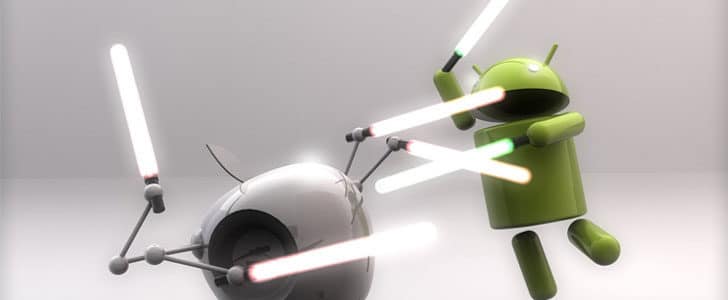The Android and iOS operating systems have been battling it out for the right to supremacy since we can remember. Apple’s iPhone and iPod Touch products, the first to utilise the IOS operating system, took the mobile phone industry by storm in 2007 with their superlative touch-screen innovation and inspirational new features. Linux responded in late 2008 with the jointly successful Android systems for their Smartphones.
Since then, a significant number of trailblazers in the industry have made use of the Android system, whilst Apple’s dominance in the market has resulted in new and improved iOS updates. Furthermore, advances in technology have seen the introduction of tablets and laptops that also make exemplary use of both operating systems.
The biggest selling handsets over the last five years have all been blessed with one of the two operating systems. Samsung has seen an incredible success rate in sold handsets across the globe, shifting more than 80 million Galaxy SIII’s in 2012. There is no doubt that the Android Jelly Bean integration is responsible.

The Galaxy SIII had to achieve noticeable success to match the iPhone 5 release in late 2012. Instead it surpasses Apple’s model, boasting a quad-core processor, a slim-line, lightweight feel and a 4.7 inch display that is visually overwhelming and truly makes the most of the ICS experience.
However, you may find that with some devices using Android OS, you will be faced with slow loading times. Moreover, there are few tablet-friendly applications meaning that you won’t get the gaming experience available on an iPad with an Android device.
Apple’s response was their own ground-breaking, feather-weight device. The iPhone 5′s modern design left experts purring even before its release. The crystal-clear screen had been enlarged to offer more space for applications and a more enjoyable video and camera experience.
In addition, Apple’s iOS 6 operating system has been upgraded to the max to give you a more effective relationship with the helpful know-it-all Siri, rapid phone navigation and an impressive incorporation with the iCloud feature.
Despite this, the upgraded operating system itself has reportedly had trouble running on many iOS devices. You may also experience some issues with their Maps application as well as the Street View option now being absent.
That’s enough of the advanced technology. It’s time to focus on what these devices have been made for. If you are feeling a little intimidated by what’s on offer here, there’s really not too much to worry about.
Firstly, the iPhone uses an exceptionally straightforward calling and receiving process, whereby the touch screen is utilized to answer or reject a call. An Android device acts in the same manner, making answering or sending calls satisfyingly effortless.
However, take it a step further if you wish and make the most of the iOS Face Time application. This allows you to view your friends and family through live streaming on your device.
Unfortunately, you won’t be able to do this on your Android, although you do have access to Skype should video calls be your preference.
With the iOS service, texting is designed to look like a messaging service that updates regularly and keeps you well informed. The Android uses a very similar messaging theme, although these can change depending on your acquired device.
Overall, both operating systems share an equal amount of prosperity. There are few who can find reasons for criticising the latest instalments from either rival. Whilst the iPhone claims an inimitable elegance, the Samsung Galaxy SIII’s stunning display and sheer power makes it an ideal purchase. In addition, there seems to be a huge potential in the Jelly Bean operating system and we can expect Android to revel in further success.
About the Guest Writer
Simon Lunn works as a freelance writer for UK Essays. Founded in 2003, it has supported students with Coursework Writing for many years.
Tags: #Android #iOS
